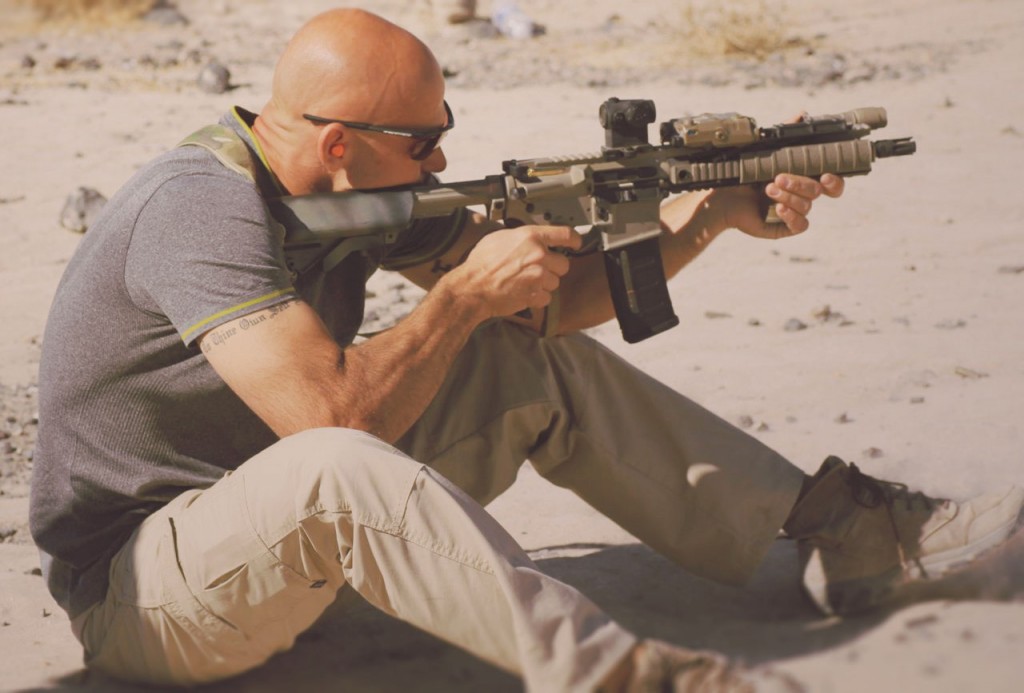 I learned much of my shooting from one of the best firearms instructors in the world, Rob Pincus. I met Rob Pincus almost a decade ago through a mutual friend in the Special Operations community, and have been training with Rob ever since.
I learned much of my shooting from one of the best firearms instructors in the world, Rob Pincus. I met Rob Pincus almost a decade ago through a mutual friend in the Special Operations community, and have been training with Rob ever since.
BRAD: What are some of the misconceptions regarding firearm use for self-defense?
ROB: There are two major areas of misunderstanding about DEFENSIVE Shooting:
First, a lot of people who are not “shooters” think training is going to be more difficult than it actually is to develop a fair amount of defensive shooting skill.
Second, too many people who are “shooters” misunderstand (or ignore) the differences between sport, or target, shooting and defensive shooting skills. I think this second misconception is the biggest problem and it contributes to the first. Most people who are going to take that step to buy a gun for defensive use and start training end up going to a friend who is a shooter… that person might not understand defensive shooting and, with the best intentions, starts the new gun owner down a path of target shooting skill fundamentals that are more mechanical and harder to learn than intuitive defensive shooting skills… so, the cycle repeats itself. This misunderstanding even exists in the instructor ranks, as truly dynamic defensive shooting techniques and methods for teaching them are relatively new concepts.
We have recently launched an organization, the Association of Defensive Shooting Instructors, aimed at increasing the understanding of how to teach these vital skills efficiently.
BRAD: What is the best weapon for home defense?
ROB: THAT is a tough question… because everyone’s home, skills and budgets are going to be different. I would definitely say a firearm is the best choice for a home defense tool, but the scenario will dictate what type of firearm would be best. For instance, if someone is in a barricaded position in their home, on the phone with the police, with their family behind them–a 20 gauge shotgun or .223 rifle is going to be hard to beat in that situation when the bad guy breaks through the door to that barricaded area. But, if the person needs to move through their house to gather family members and/or make sure they are safe, then I’m probably going to recommend a handgun because it is easier to move around with. For students without extensive amounts of training in moving with a firearm and the tactics of movement around corners and through structures, I often recommend that they move with the firearm holstered until they know that they have a threat in the home.
BRAD: What is the best ammunition for self-defense and why?
ROB: Ammunition selection is a balance between power & recoil, influenced by the capacity of any given firearm. Defensive Handguns have the greatest variation in potential power… from .22 caliber up to half inch diameter bullets with rifle-like energies, there is are an over-whelming amount of options. We have to look at what we are trying to accomplish: to significantly affect the bad guy’s ability to hurt us. Under the circumstances of most defensive shootings, that is most reliably done by putting multiple rounds through the high center chest quickly and breaking down the bad guy’s ability to operate. There has been plenty of research (most notably by the FBI) and empirical data collected about what handgun bullets do to the human body. If you are using modern design, bonded/jacketed hollow points, you’re going to find that just about any 9mm, .40 S&W, .38 Special, or .45 ACP round will break the theshold of minimum power and depth of penetration to break down the bad guy, If you put the rounds into the right place, of course! So, if we go back to my first sentence, the 9mm gives you the amount of power you are looking for, with the lowest amount of recoil and the highest capacity of ammunition in any given handgun…. which is why I carry that caliber for personal defense and recommend it to all my students. Personally, I carry Winchester PDX1 ammunition.
BRAD: Where did the idea for your new pistol sight come from?
ROB: The Claw Emergency Manipulation Sight is a solution to a problem that I’ve seen many students have in advanced classes. For some reason, way back in the 80’s and 90’s, it become fashionable to have slanted rear sights on defensive pistols. Honestly, the reason was probably style, but the excuse for the designs revolved around fears of “snagging” (which really don’t make any sense) or injuring your hand while performing an out-dated “sweeping” technique to clear a malfunction type that was very common with 1911 pistols (also outdated) that were popular during that era. This preference for slanted rear sights has faded, but some major manufacturers still ship defensive pistols with these slanted rear sights because of collector appeal and industrial inertia. Slanted rear sights make it incredibly hard to perform one handed reloads and malfunction drills with a semi-automatic pistol. With a flat- fronted rear sight, or especially with the concave front surface of The Claw, these techniques can be performed relatively easily. Of course, the likelihood of needing to perform such a technique is incredibly low, so it was really important that The Claw was a perfect rear sight for defensive shooting FIRST and an aide in the worst case scenario of one-handed manipulations second. For that reason, The Claw has a wide rear notch to make finding the standard front sight easier and is plain black, to make the front sight (which is where your focus should be, during sighted fire) stand out even more.